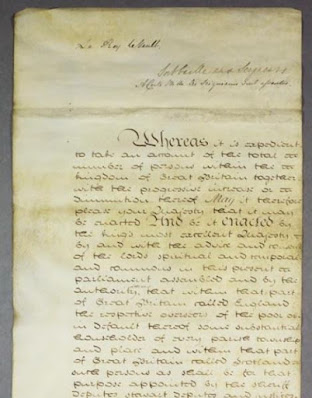The bells are ringing
Genealogists spend a lot of time searching for marriage records. They are valuable vital records — not just to prove our ancestors were legally married and that their children were legitimate, but they often provide us with the maiden name of our female ancestors. This in turn enables us to graft another branch onto the family tree. Finding marriage records can be quite frustrating however.
Start by trying to work out:
- Location of the marriage - search for clues for where the family lived
- Approximate year of the marriage - you may have to give a guess for this
- Names of the people being married - at least one of them
Marriage
records usually contain:
This information can lead you to birth documents, and back a generation, and this is why many genealogists use marriage records quite extensively.
A note of caution: One very important thing to consider when researching in marriage records, is that a marriage license or listing of banns by itself is not proof of marriage. It was not uncommon for couples to intend to marry and then never follow through with the ceremony.
Research into the particular country you are trying to find the record from. As previously discussed, find out when marriage records went from church records to civil records and bring this back to the time frame you may be looking for.
Possible sources
Ask the family and look for/in family bibles if you have any, this could give you some very good leads. You may be surprised what you find, photos, photographs, postcards, wedding invitations, all clues to lead you to vital records. Here is a letter of congratulations that I found in my father's papers. from the company he worked for.
Search for the marriage in BDM indexes (for Australia see each state) this will give you the information you need to order a Marriage Certificate. Most countries will have indexes you can search either online or other mediums such as microfiche. Many are online through Family Search and Ancestry.
Depending upon the time frame, you may need to go back to church records, you will have to find out if they are online or at the church. This might mean you need to guess which church they may have been married at, and take a trip to the church to look through their records. Check with them first.
Look for the birth information of the children, as this will have the mother's first name on them, it will help to narrow it down.
Check death records as these were kept in many areas long before marriage records and, therefore, can often be easier to locate. Don't forget cemeteries and toombstones, they often list the spouse. A death record may contain a marriage date and/or the names of the parents of the deceased.
Wills and estate settlements may help you to narrow down a marriage date. For example, a will for one of the parents of the couple in question may name children and spouses among the family and heirs.
Newspapers often listed marriage banns, marriage announcements, births, and deaths.
Pension records, especially military pension records, will often include marriage information.
Military records will list spouses on attestation and other papers.
Census records may include the number of years married. Ages or birth locations listed for the children can also help to narrow down marriage date/location. Keep in mind that availability and usefulness of census records varies widely by country.
Some questions to ask
Did they immigrate? - If so, look for immigration applications, immigration records, ships passenger lists.Did they marry at sea? - Again, check shipping records
Were they convicts? - Convict records are usually found at the state archives. A great guide to convict records can be found here, at the Qld Archives site
Did they own land or a house? - Deeds, homestead applications, mortgages and other property records may help to narrow down a marriage date as they may often mention the spouse.
Did they vote? - voter records including (for Australia) the electoral roll can be useful as they can give help you find the family and where they lived.
How common was the name? - a word of caution here, it is very easy to be led down the wrong branch of genealogy. In the past people with the same surname often lived in the same area, and this can make it confusing to find the right people. Make sure you have two sources that point to the right marriage before you decide you have the correct marriage.
Finally, one of the things I enjoy most about genealogy is finding marriage photos, here is one of my favorites. My cousin was dressed in the height of fashion with the lovely tiered lace dress, and my mother made our dresses out of a pale yellow lemon fabric with a yellow flower print and lovely satin sashes and tulle petticoats.
 | ||||||||||||
| Mum, Cousin Maureen, Barbara (me) and Colleen my sister, taken in the 1960's |




Comments
Post a Comment
Thank you for your comment on my Blog. I love to get feedback and information to share from my readers.
To keep up to date simply follow me on facebook or subscribe using the button at the top of the blog page.
Barb